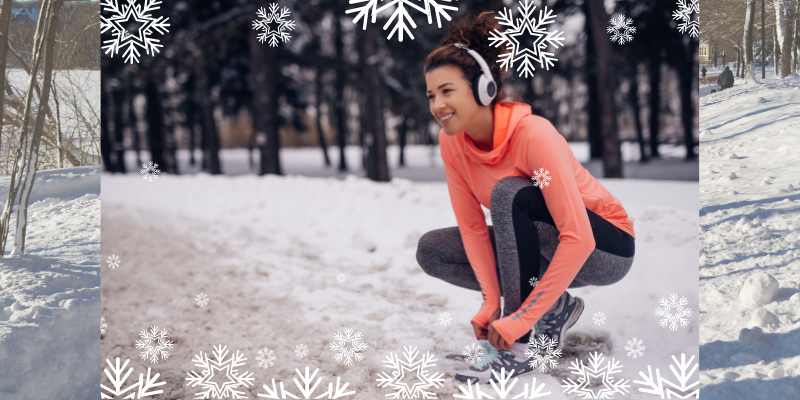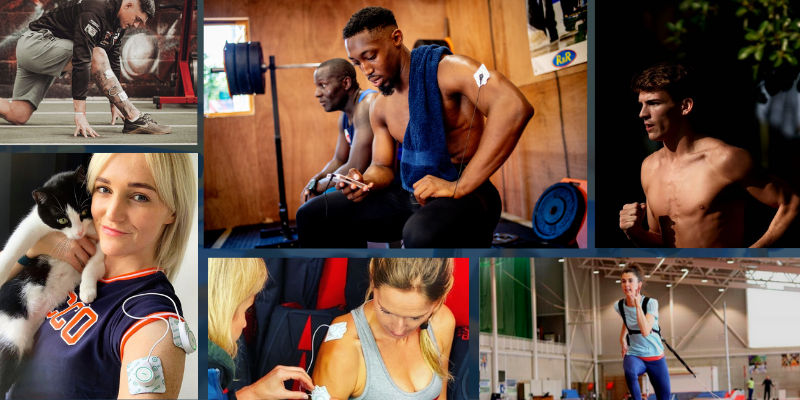Ashley Watson is an elite athlete, sports therapist and powerlifting coach. He is the founder of Sports Injury Clinic, Anatomy Well-being, and has worked as sports therapist to a number of elite athletes, including the GB Bobsleigh team and Peterborough United FC Academy. Ashley has a colourful background in sports, and previously competed as an academy football player, national sprinter and former brakeman with the GB Bobsleigh team.
We talk with Ashley about common winter season injuries he sees at his clinic, plus some of the stranger ones he has treated over the years. He also shares some insight into how the NuroKor can assist with the recovery process.

Adapt to your climate
“In the winter season I tend to treat more muscles strains, specifically calf and hamstring strains, as people are not warming up well enough,” explains sports therapist and ex-GB bobsleigh athlete Ashley Watson.
“People tend to keep their warm up the same as always, what people don’t realise is your warm up should be adapted to your environment,”
He continues. “If it is very hot you may want to be more specific in your warm up so you don't overheat yourself and lose too much salts and fluids. If it is very cold, it would be advised to wrap up well and do a longer warm up.”

Be careful of slippery surfaces
Watson, who runs Sports Injury Clinic, Anatomy Well-being based in Peterborough, also cites icy and muddy surfaces as a big culprit for rises in sprains over the winter months. “I see lots of ankle sprains due to falls on ice or on muddy surfaces” says Watson.

He continues: “Ankles seem to be the most common sprains, but there are also wrists and knee injuries. Slippery surfaces are often to blame!”
Unexpected injuries with strange causes
The winter months also bring more colds and coughs, and for Watson, a big coughing fit was the cause of one of the oddest injuries he has treated. He tells us more: “I once treated a patient who had a complete back spasm caused by coughing. The patient literally had no movement in the spine and was in significant pain. The coughing fit caused inefficient intra-abdominal pressure. A lot of sudden pressure on the back can cause this to happen.”

So how did Watson treat the pain? “I had to start with a technique called dry needling as the patient was in so much pain to do anything else. Once movement was restored, we started on an exercise rehab routine. At the time I hadn’t been introduced to NuroKor, but if I had, this would have been another good go-to option to help with the pain management.”

Winter sports injuries
Watson goes on to explain some of the more incredulous injuries he has treated during his time in sports therapy: “A lot of team sports are played over the winter, including rugby and football. I treat a lot of injuries in both sports, and I have seen several strange and pretty extreme injuries in both.

Football knee troubles
“I once had a patient who ruptured the ACL, MCL, PCL (three main knee ligaments) and meniscus in the knee playing football. That is quite some injury and occurred when the player was changing direction,” explains Watson.
“After the patient had surgery they were immobilised, then I saw them for the first time a week after the cast was removed. We started with working on range of movement, then moved on to strengthening exercises. We also did a lot of proprioception and stability exercises, which were important as the patient had a clear goal to return to football.”

Fractured pelvis in rugby
Watson has also treated a rugby player who fractured their pelvis during a match. He explains more: “The player was being tackled and unfortunately got their boots wedged into the grass. As this happened the opposing player fell awkwardly on the patient, which resulted in a fractured pelvis.”

Watson explains how the fractured pelvis was treated: “The first focus was on pain management and trying to reduce inflammation. In addition to prescribed medication from their GP, I also added in compression taping, compression clothing and cryotherapy (freezing therapy for pain management).”
He goes on to explain how bioelectric technology can benefit in this circumstance. “In the acute phase of an injury when there is a lot of pain due to the inflammatory response or connective tissue damage, NuroKor can be very useful.
"Using NuroKor can help reduce pain which then allows for more efficient and quality rehabilitation. When people have pain present, they tend to feel less confident and limit certain movements which they should be doing.”

Once the acute phase has been dealt with, restoring range of movement is the next priority. Watson elaborates: “Restoring range of movement for the rugby player was key. This was done via active movements, passive stretching and manual therapy techniques. We also worked on strengthening throughout the rehab, but progressed slowly. We used bodyweight exercises, isometrics, resistance bands, proprioception exercises and resistance training. In the final block of rehab we introduced plyometrics.”
The bioelectronic edge

With an injury, especially in athletes, we often see players return back to their sport fitter than when they started the rehab. For elite athletes in particular, rehabilitation is often very intense, and recovering from the rehab exercises can sometimes be slow.
Watson believes that using bioelectrical therapy can help patients recover from the rehab exercises, speeding up the return to sport.
Indeed, Watson is a regular user of NuroKor himself to aid recovery:
“NuroKor is a life saver when it comes to recovery. After a training session I will do some active recovery, mobility and use my NuroKor device. Afterwards I almost feel like I'm ready to work out again! I also have had a few niggling injuries and NuroKor definitely prevents me from suffering. My performance has increased, and aches decreased since using the technology”

As we enter the depths of winter, Watson is getting prepared to treat some typical winter injuries, and indeed some out of the ordinary ones! After discovering bioelectrical therapy, he will undoubtedly be building the use of NuroKor into his patient’s rehabilitation programmes.
Find out more about Anatomy Well-being and follow Ashley Watson on his Instagram or Facebook for more sports therapy guidance.



